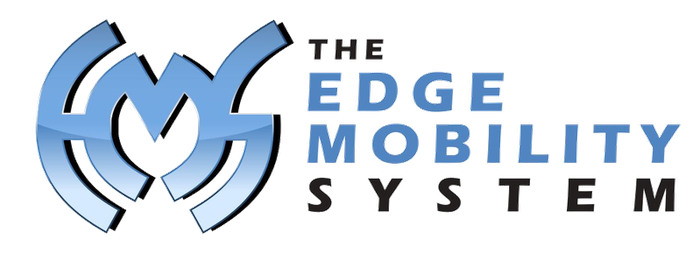A Guide to Overbreathing
How It Affects Your Health & What You Can Do About It

What's in your toolbox as a fallback when your go to assessments and treatments aren't having an effect? Some things I start to examine are lifestyle, nutrition, sleep, and stress. Sometimes it's as simple as an activity they haven't told you about or a position they adopt frequently that are negating the treatment effects.
However, after taking those into account, or if they have conditions like chronic fatigue, POTS, chronic pain, or MSK complaints that aren't improving, I assess for overbreathing.
I made a handy guide that explains the basics. I'm developing a course on it as overbreathing assessment and treatments should be in every PT's toolbox.
The Pain-Modulating Power of Isometric Contractions
An Guide for Physical Therapists
What are Isometric Contractions?
A muscle contraction where the muscle generates force without changing its length (i.e., no joint movement).
- Examples: Pushing against an immovable object, holding a plank, wall sits.
Key Mechanisms of Pain Modulation
1. Central Nervous System (CNS) - Descending Pain Inhibition
Mechanism: Isometric contractions, especially high-intensity ones (70% MVC or greater), activate brain regions involved in pain processing (e.g., periaqueductal gray, rostral ventromedial medulla).
Effect: This leads to the release of endogenous opioids (e.g., endorphins, enkephalins) and other neurotransmitters that inhibit pain signals from reaching the brain. This is often referred to as Conditioned Pain Modulation (CPM).
Why it helps: Provides immediate, short-term analgesia, creating a "window of opportunity" for movement or further therapeutic exercise.
2. Peripheral Nervous System (PNS) - Gate Control Theory
Mechanism: Non-noxious input (like the strong sensory feedback from a sustained isometric contraction) travels via large-diameter Aβ fibers.
Effect: This input can "close the gate" in the spinal cord, blocking or reducing the transmission of noxious pain signals (carried by smaller C and Aδ fibers) to the brain.
Why it helps: Reduces the perception of pain at the spinal cord level.
3. Reduced Muscle Spasm & Protection
Mechanism: Pain often leads to protective muscle guarding or spasm. Isometric contractions can help to gently engage and then relax these muscles.
Effect: By activating muscles without movement, it can help to break the pain-spasm-pain cycle, improve local circulation, and reduce sensitivity.
Why it helps: Addresses a common contributor to musculoskeletal pain, allowing for better tissue healing and movement.
4. Improved Proprioception & Body Awareness
Mechanism: Sustained isometric holds provide rich proprioceptive feedback to the CNS about joint position and muscle tension.
Effect: Enhances the body's internal map and awareness of the affected area, which can be disrupted in chronic pain states.
Why it helps: Better body awareness can reduce fear of movement and improve motor control, contributing to pain reduction.
5. Psychological Factors
Mechanism: Successfully performing an isometric contraction, even in the presence of pain, can increase self-efficacy and reduce kinesiophobia (fear of movement).
Effect: Patients gain confidence that they can move and load the affected area without exacerbating pain.
Why it helps: Addresses the emotional and cognitive components of pain, empowering patients in their recovery.
Clinical Applications & Considerations
Acute Pain Management:
- Use: Early stages of injury (e.g., tendinopathy, muscle strain) where movement is painful or contraindicated.
- Benefit: Provides an analgesic effect and maintains muscle activation without stressing damaged tissue.
- Parameters: Often lower intensity, shorter duration.
Chronic Pain Management:
- Use: To re-introduce movement, build confidence, and modulate persistent pain.
- Benefit: Activates descending pain inhibition and addresses fear-avoidance behaviors.
- Parameters: Can progress to higher intensities and longer durations as tolerated.
Dosage & Parameters:
- Intensity: Often 30-70% of maximal voluntary contraction (MVC) for pain relief. Higher intensities (70-80% MVC) for greater analgesic effect (CPM).
- Duration: 30-45 seconds per hold is commonly cited for pain modulation. Shorter (5-10s) for endurance, longer for strength.
- Reps: 3-5 repetitions per exercise, with adequate rest between holds.
- Frequency: Can be performed multiple times a day as needed for pain relief.
Patient Education:
- Crucial: Explain why isometrics help (the mechanisms) to empower patients and manage expectations.
- Focus: Emphasize "pain *modulation*" rather than "pain *elimination*."
- Guidance: Instruct patients to perform within their tolerable pain limits (e.g., 0-3/10 on a pain scale).
Summary: A Powerful Tool in Your Arsenal
Isometric contractions offer a versatile, low-risk, and effective strategy for pain modulation across various musculoskeletal conditions. By leveraging both central and peripheral mechanisms, alongside psychological benefits, they provide physical therapists with an immediate and empowering intervention for their patients.
References
- Rio E, Kidgell D, Purdam C, Gaida J, Moseley GL, Pearce AJ, Cook J. Isometric exercise induces analgesia and reduces inhibition in patellar tendinopathy. *Br J Sports Med*. 2015;49(19):1277-1283. doi:10.1136/bjsports-2014-094386
- Alsouhibani A, Vaegter HB, Bement MH. Systemic Exercise-Induced Hypoalgesia Following Isometric Exercise Reduces Conditioned Pain Modulation. *Pain Med*. 2019;20(1):180-190. doi:10.1093/pm/pny057
- Naugle KM, Fillingim RB, Riley JL 3rd. A meta-analytic review of the hypoalgesic effects of exercise. *J Pain*. 2012;13(12):1139-1152. doi:10.1016/j.jpain.2012.09.006

